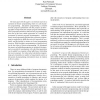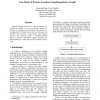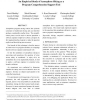IWPC
2000
IEEE
14 years 6 months ago
2000
IEEE
As a software system evolves, its architecture will drift. System changes are often done without considering their effects on the system structure. These changes often introduce s...
IWPC
2000
IEEE
14 years 6 months ago
2000
IEEE
The main goal with this paper is to motivate and coin a variation of literate programming which we call elucidative programming. Elucidative programming is oriented towards progra...
IWPC
2000
IEEE
14 years 6 months ago
2000
IEEE
This paper presents a framework for software architecture recovery and restructuring. The user specifies a high level abstraction view of the system using a structured pattern la...
IWPC
2000
IEEE
14 years 6 months ago
2000
IEEE
We combine type inference and concept analysis in order to gain insight into legacy software systems. Type inference for COBOL yields the types for variables and program parameter...
IWPC
2000
IEEE
14 years 6 months ago
2000
IEEE
Experimental evaluation of clustering techniques for component recovery is necessary in order to analyze their strengths and weaknesses in comparison to other techniques. For comp...
IWPC
2000
IEEE
14 years 6 months ago
2000
IEEE
Call graphs are commonly used as input for automatic clustering algorithms, the goal of which is to extract the high level structure of the program under study. Determining the ca...
IWPC
2000
IEEE
14 years 6 months ago
2000
IEEE
ng the Accessor Classification Approach to Detect Abstract Data Types icle presents an approach to identify abstract data types (ADTs) in source code. For each structured type de�...
IWPC
2000
IEEE
14 years 6 months ago
2000
IEEE
Software change requests are often formulated as requests to modify or to add a specific feature or concept. To implement these changes, the features or concepts must be located i...
IWPC
2000
IEEE
14 years 6 months ago
2000
IEEE
IWPC
2000
IEEE
14 years 6 months ago
2000
IEEE
Software system documentation is almost always expressed informally, in natural language and free text. Examples include requirement specifications, design documents, manual page...



